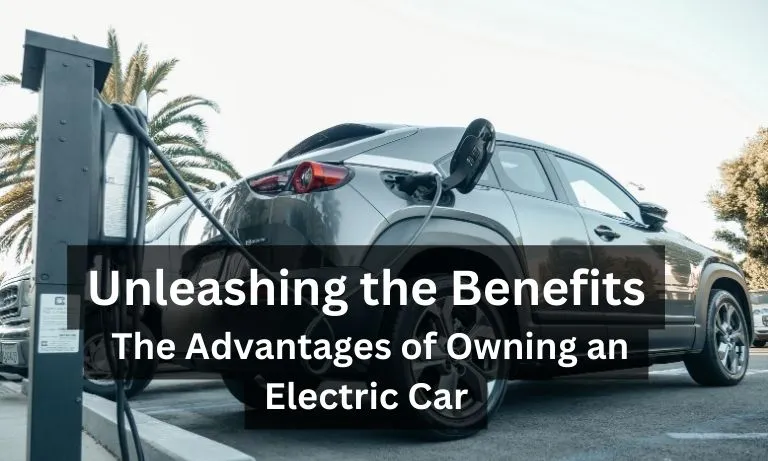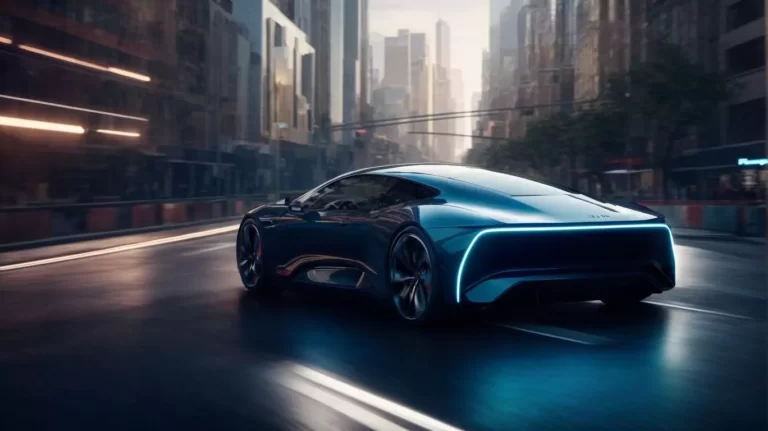Top 11 Safety Features Found in Electric Vehicles

The electric vehicle (EV) market is rapidly accelerating, with more and more drivers making the switch to electric. While the environmental benefits of EVs are widely recognized, some potential buyers might have lingering concerns about safety.
The good news? Electric vehicles are packed with innovative safety features designed to protect drivers, passengers, and pedestrians alike. We will debunk any safety myths and dive deep into the top 11 safety features found in electric vehicles, giving you peace of mind on the road. So, buckle up and get ready to learn how EVs are leading the charge in automotive safety!
1. Advanced Driver-Assistance Systems (ADAS): Your Electric Car’s Copilot
Imagine having an extra set of eyes on the road, constantly monitoring your surroundings and giving you warnings when needed. That’s the power of Advanced Driver-Assistance Systems (ADAS). These intelligent systems act like a virtual copilot, using a suite of sensors to create a 360-degree awareness of your environment.
ADAS relies on a combination of technologies like cameras, radar, and LiDAR (Light Detection and Ranging) to gather real-time data. Cameras provide visual information, radar detects the distance and speed of objects, and LiDAR creates a highly detailed 3D map of the surroundings. By fusing the data from these sensors, ADAS can paint a comprehensive picture of what’s happening on the road, keeping you informed and potentially preventing accidents.
Common ADAS features in electric vehicles include:
- Automatic Emergency Braking (AEB): This crucial system can detect a potential collision with a vehicle or pedestrian ahead and automatically apply the brakes if the driver doesn’t react in time.
- Lane Departure Warning (LDW): If you unintentionally drift out of your lane without activating your turn signal, LDW will provide a visual or audible alert to get you back on track.
- Blind Spot Monitoring (BSM): Ever wished you had eyes in the back of your head? BSM uses radar sensors to detect vehicles hidden in your blind spots, giving you a warning signal to change lanes safely.
These are just a few examples, and ADAS technology is constantly evolving. With ADAS by your side, you can navigate the roads with greater confidence and peace of mind.

2. Regenerative Braking: Turning Stops into Boosts
Imagine if braking your car not only slowed you down but also helped recharge the battery! That’s the magic of regenerative braking, a game-changing technology found in electric vehicles.
Here’s how it works: Unlike gasoline-powered cars that rely on friction brakes to slow down, electric vehicles use their electric motor for double duty. When you lift your foot off the accelerator pedal, the electric motor essentially flips its role. Instead of using battery power to spin the wheels and propel the car forward, it acts as a generator. The motor resistance creates a drag effect, slowing down the vehicle. But here’s the clever part: this resistance also generates electricity that’s fed back into the battery pack, effectively putting some of that wasted braking energy to good use.
Regenerative braking offers a two-fold benefit:
- Increased Range: By capturing energy that would normally be lost as heat during traditional braking, regenerative braking can extend the driving range of your electric car. Every little bit of recaptured energy helps you travel further on a single charge.
- Reduced Brake Wear: Friction brakes in gasoline cars wear down over time, requiring replacements. Electric vehicles, with their regenerative braking system, rely less on traditional brakes for slowing down. This translates to reduced wear and tear on the friction brakes, saving you money on maintenance costs and extending the lifespan of your braking system.
So, the next time you come to a stop in your electric car, remember that you’re not just slowing down – you’re also topping up your battery and giving your brakes a break. It’s a win-win for both efficiency and your wallet.
3. The Battery Management System (BMS): The Guardian Angel of Your EV’s Battery
The battery pack is the heart of an electric vehicle, and just like any vital organ, it needs constant care and monitoring. That’s where the Battery Management System (BMS) comes in. Think of it as the guardian angel of your EV’s battery, working tirelessly behind the scenes to ensure its safety, health, and optimal performance.
The BMS acts as the central control unit for the battery pack. It’s equipped with sophisticated sensors that constantly monitor a variety of critical factors, including:
- Individual Cell Voltages: The BMS keeps a watchful eye on the voltage of each individual cell within the battery pack. Consistent voltage across all cells is crucial for safe and efficient operation.
- Battery Temperature: Just like Goldilocks and her porridge, electric vehicle batteries have a preferred temperature range for optimal performance. The BMS keeps the battery pack within this safe operating zone by regulating its temperature through cooling systems when needed.
- Current Flow: The BMS monitors the flow of current entering and exiting the battery pack, ensuring it stays within safe limits to prevent damage.
By continuously monitoring these key metrics, the BMS can identify potential problems early on. If it detects a cell with abnormal voltage, excessive temperature, or unsafe current levels, the BMS can take corrective action. This might involve reducing charging or discharging power, or even completely shutting down the system to prevent damage to the battery or other vehicle components.
The BMS plays a particularly crucial role in ensuring temperature control. Extreme temperatures, both hot and cold, can significantly impact battery health and safety. The BMS works in conjunction with the vehicle’s cooling system to maintain the battery pack within a safe operating temperature range. This not only protects the battery from damage but also optimizes its performance and extends its lifespan.
In short, the BMS is the silent guardian angel of your electric vehicle’s battery. By constantly monitoring and managing critical factors, it ensures safe, reliable, and efficient operation, giving you peace of mind on the road.
4. Built for Stability: The Structural Design Advantages of Electric Vehicles
Electric vehicles (EVs) are engineered with safety in mind, and their unique architecture plays a key role. Unlike traditional gasoline-powered cars where the engine sits relatively high in the chassis, EVs benefit from a low center of gravity thanks to the strategic placement of the battery pack.
This placement, typically along the floor of the vehicle, has a significant impact on stability. Imagine a car taking a turn – a higher center of gravity raises the risk of a rollover, where the vehicle tips over onto its side. In EVs, the lower center of gravity creates a more balanced weight distribution, making them inherently less prone to rollovers during sharp turns or evasive maneuvers. This design feature is particularly important for SUVs and crossover EVs, which tend to have a higher center of gravity due to their ride height.
But the safety benefits of an EV’s structure go beyond rollover prevention. Many EVs are constructed using high-strength steel and other advanced materials. These materials create a robust safety cage around the passenger compartment, designed to absorb impact energy and protect occupants in the event of a collision. This focus on structural integrity complements the lower center of gravity, providing a comprehensive approach to occupant safety in electric vehicles.
So, the next time you see an EV, remember – it’s not just about the electric motor and battery. The car’s very foundation is designed with your safety in mind.
5. Cybersecurity for Electric Vehicles
As technology advances, so do potential cybersecurity threats. EV manufacturers are increasingly implementing robust cybersecurity measures to protect your vehicle from unauthorized access or manipulation.
The automotive industry and cybersecurity experts are actively working to address these threats. These measures include secure communication protocols, encryption of sensitive data, and regular software updates to address vulnerabilities. Learn more about cybersecurity for your EV and what you can do.
6. Fire Safety: Addressing Concerns and Highlighting Safeguards
While the lithium-ion batteries that power electric vehicles offer significant environmental benefits, some potential owners might have lingering concerns about fire safety. It’s important to understand that EVs are engineered with fire safety as a top priority.
The battery pack, often considered the most fire-prone component, is housed in a reinforced compartment constructed with fire-resistant materials. This compartment provides a physical barrier in the event of a collision. Additionally, a sophisticated cooling system actively manages battery temperatures, reducing the risk of overheating, a potential fire trigger. In the unlikely event of a battery fire, EVs often have automatic shut-off systems that isolate the battery and prevent further damage.
Furthermore, extensive testing and safety regulations ensure that EVs meet rigorous fire safety standards. So, while fire risk is a consideration for any vehicle, EVs are equipped with safeguards to minimize the likelihood and severity of a fire incident.
Standard Safety Features found in Electric Vehicles
Electric vehicles (EVs) are packed with innovative technology, but their commitment to safety starts with the basics. Just like their gasoline-powered counterparts, most EVs come equipped with a suite of standard safety features designed to protect you, your passengers, and others on the road. Let’s buckle up and explore some of these essential systems:
7. Airbags
Multiple airbags are strategically placed throughout the cabin to cushion occupants in the event of a collision. These airbags can deploy in milliseconds of a crash, providing critical protection for the head, chest, and knees.
8. Anti-lock Braking System (ABS)
This essential system prevents the wheels from locking up during hard braking, allowing you to maintain steering control even in slippery conditions. ABS helps you avoid skidding and potentially losing control of the vehicle in emergency braking situations.
9. Electronic Stability Control (ESC)
Also known as Electronic Stability Program (ESP), this system is a guardian angel in maintaining vehicle stability. By constantly monitoring steering input, wheel speed, and vehicle dynamics, ESC can detect potential skids or loss of control. When needed, it can apply brakes to individual wheels and reduce engine power to keep you on track.
10. Traction Control System (TCS)
This system helps prevent the drive wheels from losing traction during acceleration on low-grip surfaces like snow or ice. By monitoring wheel speed and engine power, TCS can automatically reduce engine power or apply brakes to individual wheels to prevent them from spinning and regain traction.
11. Tire Pressure Monitoring System (TPMS)
Maintaining proper tire pressure is crucial for safety and fuel efficiency (or range in the case of EVs). The TPMS constantly monitors tire pressure and alerts you if a tire is underinflated. This allows you to address the issue promptly and avoid potential blowouts or handling problems.
While these features are standard on most EVs, it’s important to note that some manufacturers might offer them as part of a package or higher trim level.
Busting the Myths
Common Misconceptions About the Safety Features found in Electric Vehicles
Electric vehicles (EVs) are rapidly becoming a mainstream choice for eco-conscious drivers. However, some lingering myths and misconceptions about their safety might hold potential buyers back. Let’s debunk some of the most common concerns:
Myth #1: Electric vehicles are more prone to fires than gasoline-powered cars.
Fact: While lithium-ion batteries do pose a potential fire risk, EVs are engineered with extensive safety features to minimize this risk. Battery packs are housed in reinforced compartments with fire-resistant materials and often have cooling systems to manage temperature. Additionally, automatic shut-off systems can isolate the battery in the unlikely event of a fire. Modern gasoline cars also carry flammable fuel, and fires can erupt due to various reasons. Overall, both EVs and gasoline vehicles undergo rigorous testing to meet strict fire safety standards.
Myth #2: Electric vehicles can’t be driven safely in rain or water.
Fact: EVs are designed to withstand rain and even shallow puddles. High-voltage components are well-sealed and insulated to prevent electrical shorts. However, it’s always best to avoid driving through deep water or flooded areas, just like any other car.
Myth #3: Electric vehicles can electrocute you if you touch them in a crash.
Fact: EVs are equipped with automatic shut-off systems that can disconnect the battery in the event of a collision, preventing any high-voltage components from coming into contact with passengers or rescuers. Additionally, the high-voltage components are shielded and isolated within the vehicle.
Myth #4: Electric vehicles don’t have enough range for everyday driving.
Fact: The range of EVs has been steadily increasing in recent years. Many modern EVs can now travel well over 200 miles on a single charge, making them suitable for most daily commutes. Additionally, the growing network of charging stations makes long-distance travel more feasible.
Myth #5: Electric vehicles aren’t as safe as gasoline-powered cars in accidents.
Fact: EVs adhere to the same rigorous safety standards as gasoline-powered vehicles. They are equipped with a comprehensive suite of safety features, including airbags, ABS, electronic stability control, and traction control. Additionally, the low center of gravity in many EVs due to the battery placement can help reduce the risk of rollovers.
By understanding these myths and misconceptions, you can make informed decisions about electric vehicles. Remember, safety is a top priority for EV manufacturers, and these vehicles are packed with innovative features to keep you and your passengers protected on the road.






